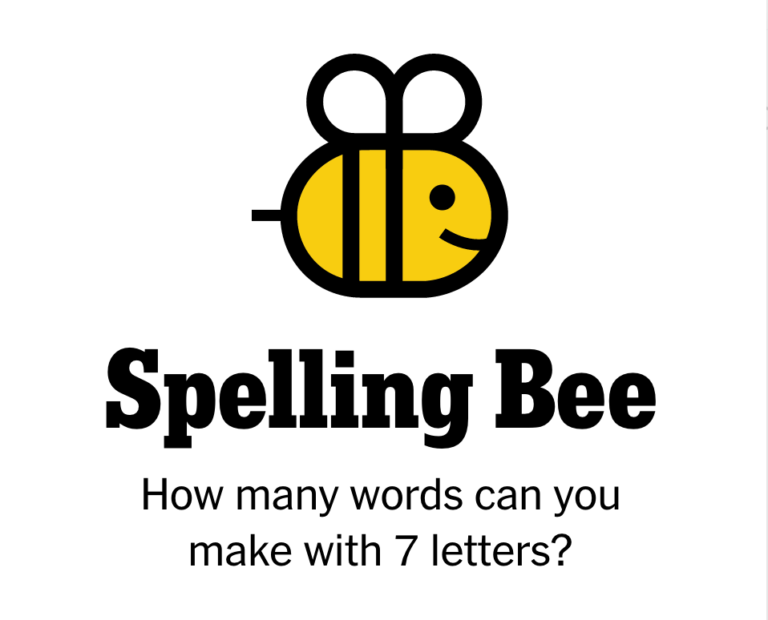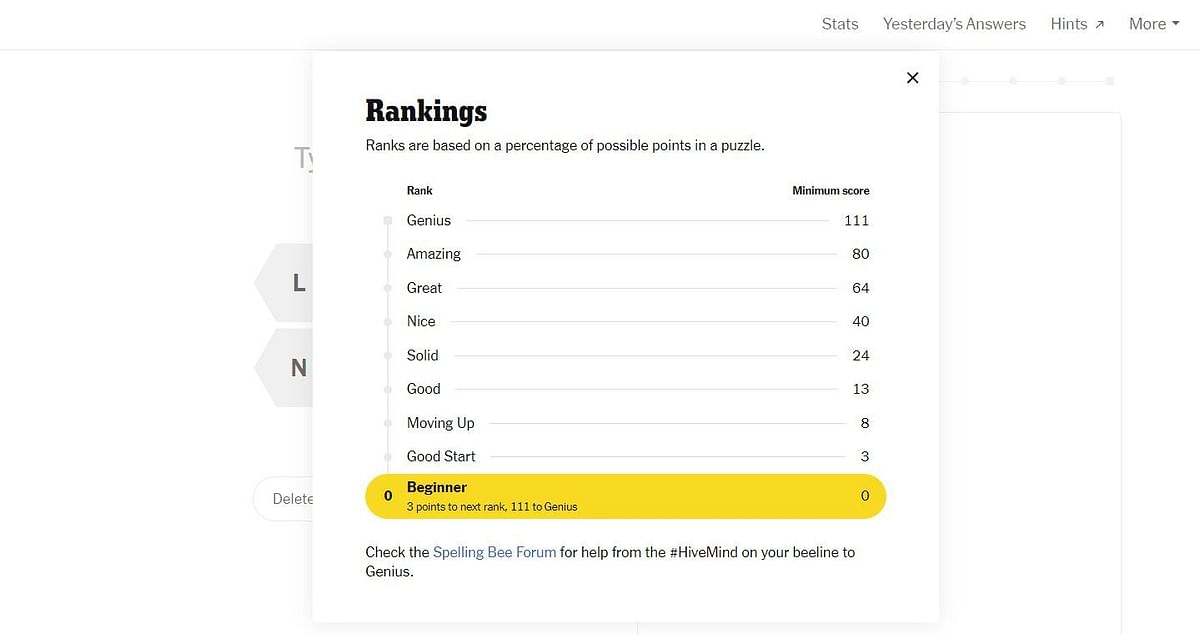The Buzzing World Of NYTimes Spelling Bee Queen Bee: A Comprehensive Dive
Let’s talk about the NYTimes Spelling Bee Queen Bee—a puzzle that’s not just a game but a linguistic adventure. It’s like diving into a treasure chest of words, where every letter matters, and every combination is a potential goldmine. Whether you’re a casual player or a hardcore word enthusiast, this game has something for everyone. So, buckle up and let’s explore the fascinating universe of the NYTimes Spelling Bee Queen Bee!
The NYTimes Spelling Bee is more than just a game—it’s a mental workout disguised as fun. It’s like Sudoku meets Scrabble, with a sprinkle of word wizardry. The Queen Bee, the central letter of the puzzle, holds the key to unlocking the ultimate word combinations. It’s a game that challenges your vocabulary, sharpens your mind, and keeps you hooked for hours.
But what makes the NYTimes Spelling Bee so special? Is it the thrill of finding that elusive pangram? Or the satisfaction of beating your own high score? Whatever it is, this game has captured the hearts of word lovers everywhere. So, let’s dive deeper into the world of the Spelling Bee and uncover its secrets.
Read also:Hosea Chanchez Net Worth Unveiling The Rising Stars Financial Empire
Understanding the Basics of NYTimes Spelling Bee
Before we get into the nitty-gritty of the Queen Bee, let’s break down the basics of the NYTimes Spelling Bee. The game presents you with a hexagonal grid of seven letters, with one letter at the center—the Queen Bee. Your task? To create as many words as possible using these letters, with the Queen Bee being a mandatory inclusion in every word. Simple, right? Well, not exactly.
Key Rules to Keep in Mind
Here are some essential rules to remember while playing the NYTimes Spelling Bee:
- Every word must include the Queen Bee.
- Words must be at least four letters long.
- No proper nouns or hyphenated words allowed.
- Each letter can be used multiple times in a single word.
These rules might seem straightforward, but they add layers of complexity to the game. It’s like solving a crossword puzzle, but with a twist. And trust me, that twist makes all the difference!
What Makes the Queen Bee So Important?
The Queen Bee is the heart and soul of the NYTimes Spelling Bee. Without it, the game would just be a random collection of letters. The Queen Bee acts as the anchor, ensuring that every word you create is connected to it. It’s like the captain of a ship, steering you in the right direction and keeping you on course.
The Role of the Queen Bee in Word Formation
When you’re playing the NYTimes Spelling Bee, the Queen Bee is your guiding star. It helps you focus your word-building efforts and ensures that you don’t stray too far from the core of the puzzle. Think of it as the North Star of the word universe—always there to guide you when you’re lost in a sea of letters.
And let’s not forget the thrill of finding that perfect pangram—a word that uses all seven letters, including the Queen Bee. It’s like hitting the jackpot in a word game, and it’s what keeps players coming back for more.
Read also:Recent Sentinel And Enterprise Obits A Heartfelt Journey Through Life Stories
Strategies for Mastering the NYTimes Spelling Bee
Now that we’ve covered the basics and the importance of the Queen Bee, let’s talk about strategies. Winning at the NYTimes Spelling Bee isn’t just about luck—it’s about skill, strategy, and a bit of word magic. Here are some tips to help you master the game:
- Focus on the Queen Bee: Always start by brainstorming words that include the central letter. This will help you build a strong foundation for your word list.
- Look for Common Prefixes and Suffixes: Words like “un-,” “re-,” and “-ing” can help you expand your word list quickly.
- Keep an Eye Out for Pangrams: These are the big-ticket items in the game, so always be on the lookout for them.
- Practice Regularly: Like any skill, the more you practice, the better you’ll get. So, make it a daily habit to sharpen your word skills.
These strategies might not turn you into a Spelling Bee champion overnight, but they’ll definitely give you a head start. And who knows? With enough practice, you might just find yourself reigning supreme in the world of word games.
Biography of the Ultimate Word Wizard
Every great game has a story, and the NYTimes Spelling Bee is no exception. Let’s take a moment to delve into the life and times of the ultimate word wizard behind this linguistic marvel.
Data and Facts About the Creator
| Full Name | Will Shortz |
|---|---|
| Birthdate | February 21, 1952 |
| Profession | Puzzle Editor, New York Times |
| Claim to Fame | Creator of the NYTimes Spelling Bee |
Will Shortz, the man behind the NYTimes Spelling Bee, is a legend in the world of puzzles. As the crossword editor for the New York Times, he has been instrumental in bringing word games to the masses. His passion for puzzles and his knack for creating challenging yet fun games have made him a household name among word enthusiasts.
Long-Tail Keywords and Variations
When it comes to the NYTimes Spelling Bee, there are plenty of long-tail keywords and variations to explore. From “NYTimes Spelling Bee solutions” to “Queen Bee word combinations,” these keywords help players find exactly what they’re looking for. Here are some popular variations:
- NYTimes Spelling Bee tips
- Queen Bee word generator
- Spelling Bee daily challenge
- Pangram finder
These variations not only make it easier for players to find information but also enrich the overall experience of playing the game.
Statistics and Fun Facts
Did you know that the NYTimes Spelling Bee has over 500,000 active players? Or that the average player spends about 20 minutes a day solving puzzles? These statistics highlight the game’s popularity and its ability to engage players of all ages.
And here’s a fun fact: The longest pangram ever created in the NYTimes Spelling Bee was 14 letters long. Can you imagine the thrill of finding such a word? It’s like discovering a hidden treasure in the word jungle.
How to Stay Updated with the NYTimes Spelling Bee
Staying updated with the NYTimes Spelling Bee is easier than ever. With the game available online and through mobile apps, you can play anytime, anywhere. Plus, the New York Times regularly updates its puzzles, ensuring that players always have fresh challenges to tackle.
Subscribing to the NYTimes Games
For the ultimate Spelling Bee experience, consider subscribing to the NYTimes Games. Not only do you get access to daily puzzles, but you also gain access to a wealth of other word games and challenges. It’s like having a personal trainer for your brain!
Common Mistakes to Avoid
Even the best players make mistakes, and the NYTimes Spelling Bee is no exception. Here are some common mistakes to avoid:
- Forgetting to include the Queen Bee in every word.
- Overlooking simple words in favor of more complex ones.
- Not checking for duplicates in your word list.
By avoiding these mistakes, you can improve your game and increase your chances of success. Remember, it’s not just about finding the most words—it’s about finding the right words.
Conclusion: Your Next Move
In conclusion, the NYTimes Spelling Bee Queen Bee is more than just a game—it’s a journey. A journey into the world of words, where every letter has a story to tell and every word has the power to inspire. Whether you’re a seasoned player or a newcomer, there’s always something new to discover in this fascinating game.
So, what are you waiting for? Dive into the world of the NYTimes Spelling Bee and let the Queen Bee guide you to victory. Share your experiences, leave a comment, and don’t forget to check out our other articles for more word wisdom. The word universe awaits—go conquer it!
Table of Contents
- Understanding the Basics of NYTimes Spelling Bee
- What Makes the Queen Bee So Important?
- Strategies for Mastering the NYTimes Spelling Bee
- Biography of the Ultimate Word Wizard
- Long-Tail Keywords and Variations
- Statistics and Fun Facts
- How to Stay Updated with the NYTimes Spelling Bee
- Common Mistakes to Avoid
- Conclusion: Your Next Move


